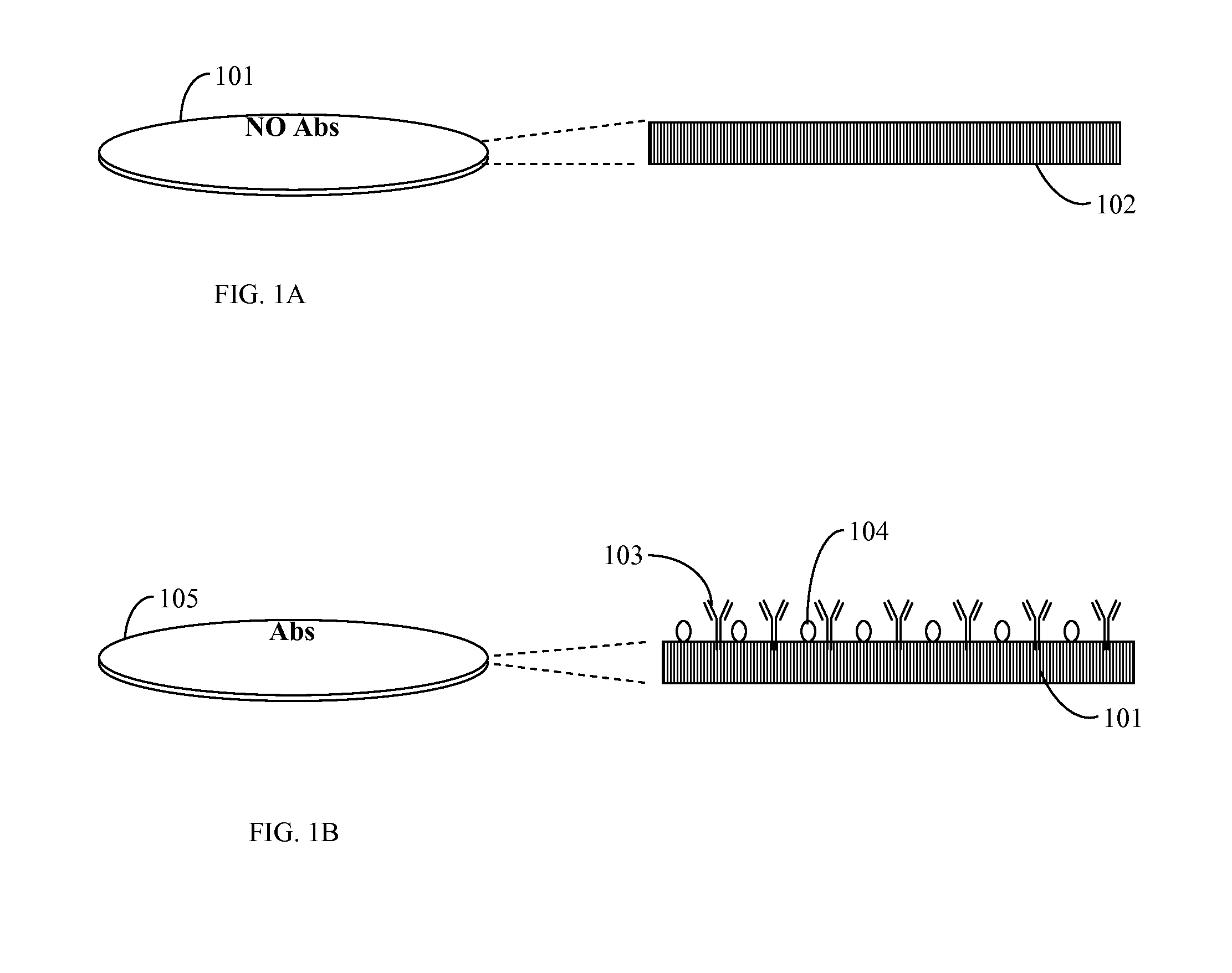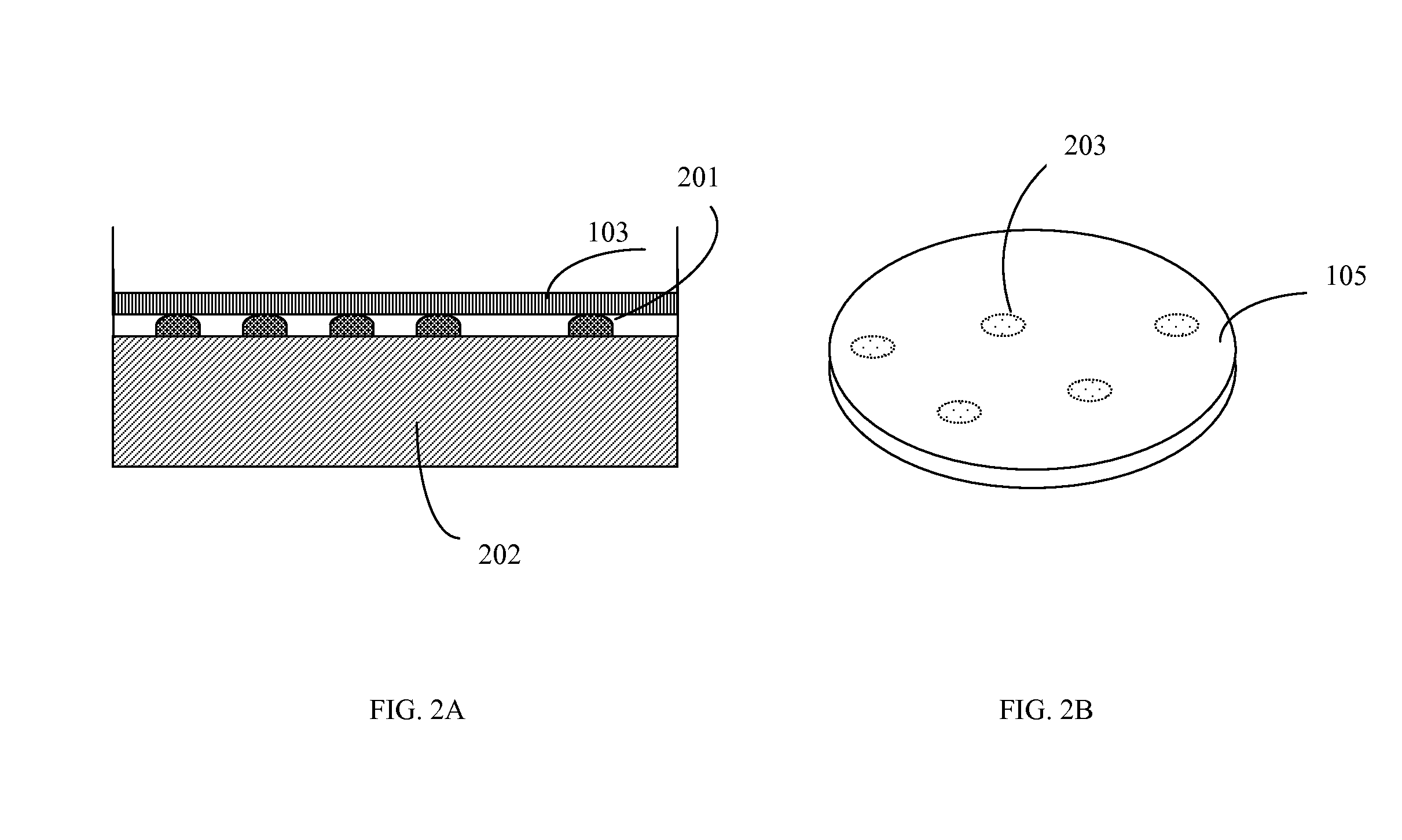Method and Apparatus for Rapid Detection and Identification of Live Microorganisms Immobilized On Permeable Membrane by Antibodies
a technology of live microorganisms and antibodies, applied in the field of microorganisms, can solve the problems of fc, inability to distinguish between living and dead cells, and inability to detect living cells in the presence of antibodies, etc., and achieve the effect of rapid detection, identification and/or enumeration
- Summary
- Abstract
- Description
- Claims
- Application Information
AI Technical Summary
Benefits of technology
Problems solved by technology
Method used
Image
Examples
example 1
Rapid Detection and Identification of One Target
[0063]A sample containing an unknown mixture of species including a possible target microorganism such as E. coli O157 H:7 was poured on a Petri plate filled with nutrient agar. A plate with microorganisms was incubated at a temperature optimal for the target microorganism for 5 to 6 hours or more. A transfer permeable membrane containing immobilized antibodies against E. coli O157 H:7 and blocked in 1% of bovine serum albumin overnight was mounted on the surface of nutrient media and incubated for approximately 0.5 to 1 minute. This time was sufficient for an antigen-antibody reaction to occur and reliable attaching of one layer of cells to immobilized antibodies. Next, the transfer membrane was washed in washing solution (PBS pH 7.4 with 0.1% Tween 20) in a washing device at medium speed of rotation for 2 minutes. The transfer membrane was placed on a staining plate containing agar with dissolved 3-(4,5-Dimethylthiazol-2-yl)-2,5-diph...
example 2
Rapid Detection and Identification of Two Targets: E. Coli O157 and Salmonella
[0064]This procedure differed from the previous procedure by using a permeable nitrocellulose membrane with two immobilized antibodies for two different targets. Thus, two species left patterns on the transfer membrane. Differentiation of the two species (E. coli O157 and Salmonella) were performed by the use of a mixture of two antibodies immobilized on the surface of a permeable membrane and blocked after immobilization in order to prevent non-specific binding. Thus, a sample containing a mixture of species presumably including E. coli O157 and / or Salmonella was placed on a solid nutrient TSA medium in a Petri plate and grown for 7 to 8 hours at 37° C. Then, the membrane with the two antibodies was placed on the surface for 0.5 to 1 minute, washed in a washing solution for 2 minutes and placed on 1% agar filled with MTT (1 mg / ml). Patterns of E. coli O157 replicas obtained a well visible violet color wi...
example 3
Rapid Detection of All Microcolonies
[0065]In this procedure, a transfer permeable membrane contained no antibodies. All microcolonies adhered to the surface of the transfer membrane by non-covalent hydrophobic interaction but not by antibody-antigen binding. The washing out step was omitted in order to retain all replicas on the surface of the transfer permeable membrane. Next, the transfer membrane was moved to a staining plate containing MTT or another chromogen without washing. All replicas obtained a very intense dark violet color without washing and could be enumerated at a very early stage of growth: after only 4 to 6 hours. This was very important for early and rapid analysis of all live cells in a sample. The chromogenic substrate could be immobilized on the permeable membrane instead of being dissolved in the agar. This could simplify analysis because it would cut out two steps: washing in washing solution and transfer onto a staining plate (agar with a chromogenic substrat...
PUM
| Property | Measurement | Unit |
|---|---|---|
| time | aaaaa | aaaaa |
| time | aaaaa | aaaaa |
| time | aaaaa | aaaaa |
Abstract
Description
Claims
Application Information
 Login to View More
Login to View More - R&D
- Intellectual Property
- Life Sciences
- Materials
- Tech Scout
- Unparalleled Data Quality
- Higher Quality Content
- 60% Fewer Hallucinations
Browse by: Latest US Patents, China's latest patents, Technical Efficacy Thesaurus, Application Domain, Technology Topic, Popular Technical Reports.
© 2025 PatSnap. All rights reserved.Legal|Privacy policy|Modern Slavery Act Transparency Statement|Sitemap|About US| Contact US: help@patsnap.com



